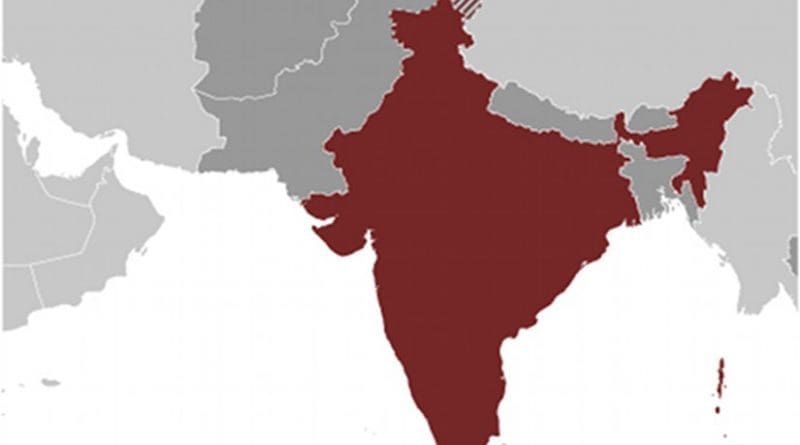A New Opposition Threatens To Rise In India – OpEd
Democracy is a game of numbers! Nowhere is this better exemplified than India, which probably has more political parties than any other country (a 2015 Times of India report said 1,866). While such a fragmented political fraternity means Governments need give “carrots” to its coalition allies, it also means parties coming together to form a larger, and forceful, Opposition. Strong regional parties forming such federal-level groups can inevitably challenge the national parties. For long, the Congress, Bharatiya Janata Party (BJP) and Communist Party of India Marxist (CPI-M) were the main national-level parties. The rest were mainly regional, centered on their provinces. But now, one such formation seems to be taking birth in India, and it may challenge the ruling BJP party in a big way in coming time.
At a time when the Congress has been facing declining vote-share and threatened with obsolescence, regional parties like Mamata Banerjee’s TMC (West Bengal), Nitish Kumar’s JDU (Bihar), Jayalalitha’s AIADMK (Tamil Nadu), Mulayam Yadav’s Samajwadi (Uttar Pradesh), Uddhav Thackeray’s Shiv Sena (Maharashtra), Mayawati’s BSP (Uttar Pradesh), Arvind Kejriwal’s AAP (Delhi) and Naveen Patnaik’s BJD (Odisha) have risen in prominence. Some won their respective provincial elections recently by thumping margins. If the game of democratic politics is like the Game of Thrones, some of these regional parties might just form a group to threaten the BJP in the next federal elections!
How did these regional parties grow so prominent? Goodwill in elections is best earned by making the voter happy, not investors or corporations. Once elections are won, one can look towards investors and corporations. But it is the voters during elections. That seems precisely what the regional parties targeted to win the strength of numbers. In poor provinces like West Bengal, a depressingly lack of jobs and livelihood in rural areas has led to large-scale economic migration to other states. To counter the poverty, Mamata Banerjee’s TMC delivered socialist-style welfare schemes like subsidized grains to win support. Welfare schemes also scored in Tamil Nadu, where Jaya’s AIADMK wooed women, students and poor with subsidized resources and freebees. In a country where the growth-story has been skewed to only the top-few cities, the poverty and lack of economic opportunities of the rural populace probably endears them to such welfare. In crime-prone provinces like Bihar and Delhi, Nitish’s JDU and Kejriwal’s AAP strove to address women’s safety and corruption. Community-based targeting helped Yadav’s Samajwadi win in Uttar Pradesh, a province where most of the development-work had hitherto benefited upper-class communities. Mayawati’s BSP had won this province previously on similar lines, by targeting a specific socially downtrodden community. Pride in own-identity has been used by Thackeray’s Shiv Sena to instill a sense of identity amongst the Maharashtrian community, a state where the Gujarati and Marwadi communities are perceived to benefit economically.
Can a coalition of regional parties threaten the BJP? The common ideology of these parties has been social welfare schemes and local area development. These can be the common thread that binds them to a united agenda to face the BJP. Some of these parties won significant vote-share. In the 2014 federal election, these eight parties (as above) won a combined vote-share of 21%, against BJP’s 31%. Secondly, their margin of victory in recent provincial elections has been significant. Mamata’s TMC and Jayalalitha’s AIADMK won 45% and 41% vote-share respectively, in their provinces in 2016. Kejriwal’s AAP and Nitish’s JDU Mahagatbandhan won 54% and 42% vote-share respectively, in their provinces in 2015. Yadav’s Samajwadi won 30% vote-share in 2012. The strength of their numbers makes one wonder at the aggregate vote–share (and hence, seat-share) these regional parties could win in the next federal election in 2019? If these parties do form a united group, they could give the BJP a run for its money! For those who think that 2019 is a long way off, these parties are playing the game of maintaining voter-mindshare. Mamata took oath in the name of “Ishwar and Allah” during her swearing-in ceremony this week, aligning with both religions that form a bulk of her province. More importantly, the transfer of additional federal monies to the provinces as part of the development agenda gives these regional governments more elbow-room to fund local development projects and win voters’ applause. In reality, the common-man in rural hinterlands may often not know if the new street-light in his village was funded by the federal or provincial government. All he cares is that his village now has a light!
Can the BJP break the back of such a coalition? BJP broke the back of India’s grand-old party, Congress, in 2014. If it has to counter a new coalition of regional parties, it has to bonhomie with some of the parties in a way that forming a united-combine becomes tougher for them. Social-welfare schemes mean a huge strain on the province’s exchequer. BJP might leverage this to turn a foe into an ally, by giving more scope of federal funds for local development. Many regional parties have acrimonious history with each other, and BJP may play one against the other by offering benefits to onboard some as allies. Till a united agenda and roadmap can be agreed upon, such a coalition will only mean too many cooks spoiling the broth, the same reason why the United Front failed in the late-1990s.
*Sourajit Aiyer is a Finance Professional based in Mumbai. He can be reached at: [email protected]. This article appeared at South Asia Monitor.

